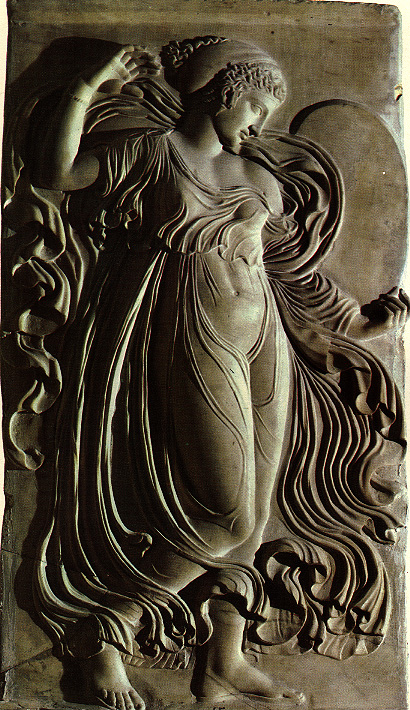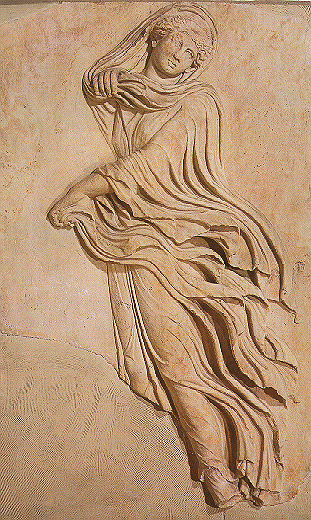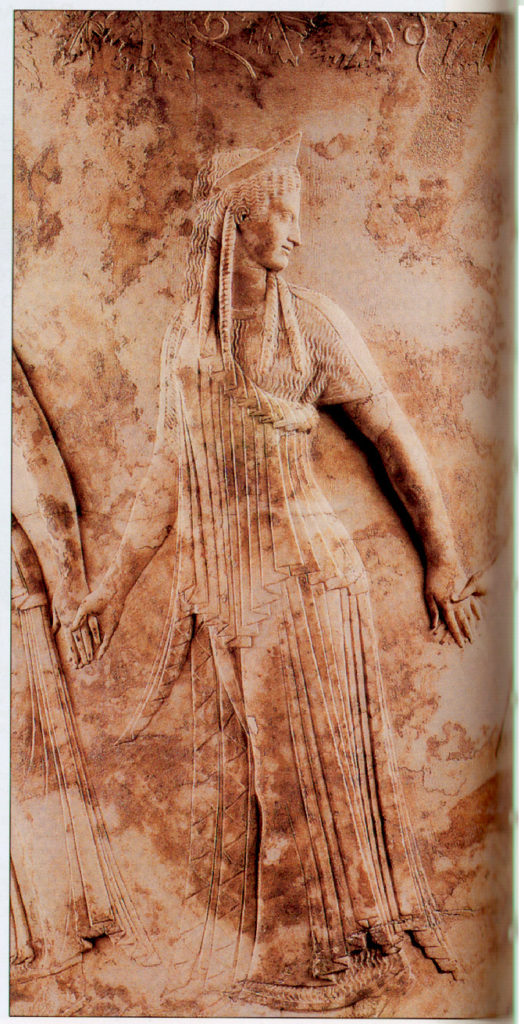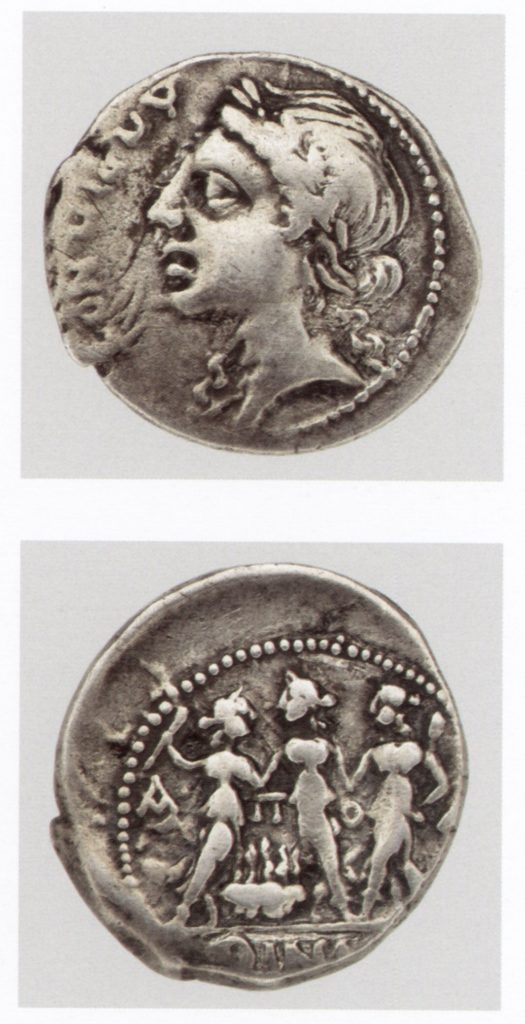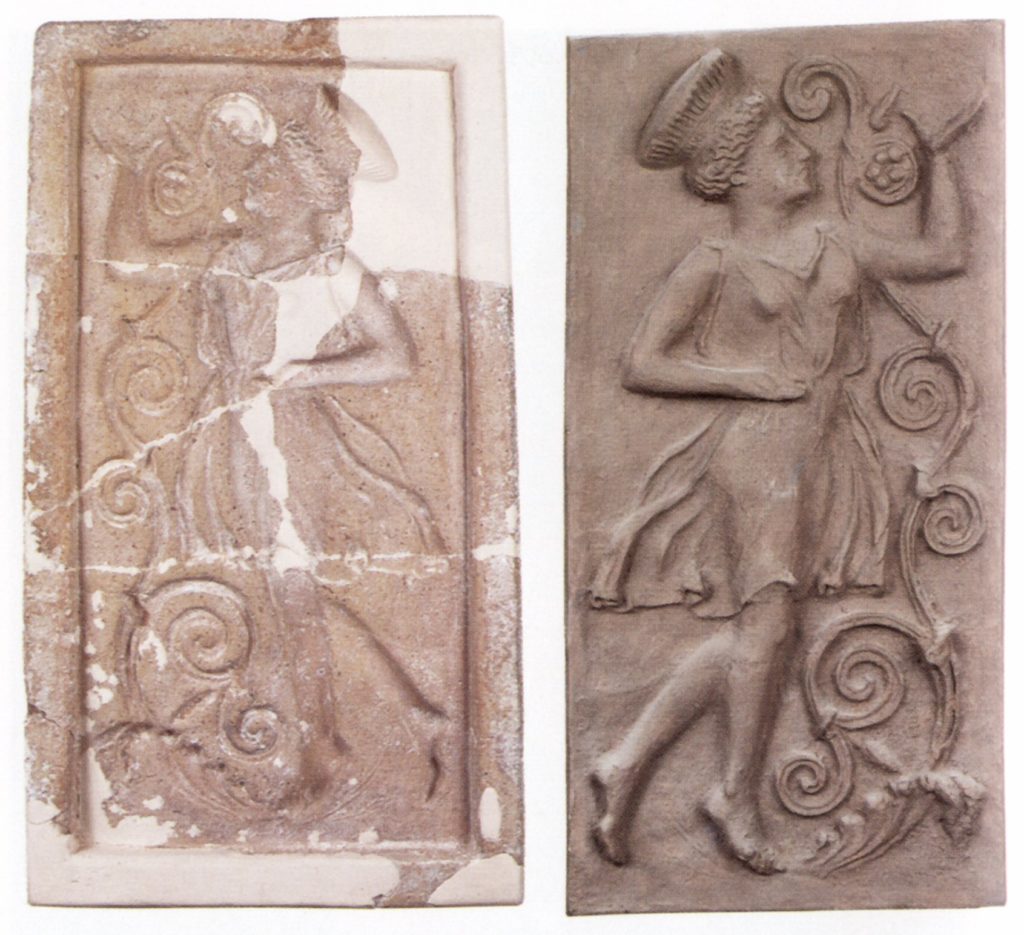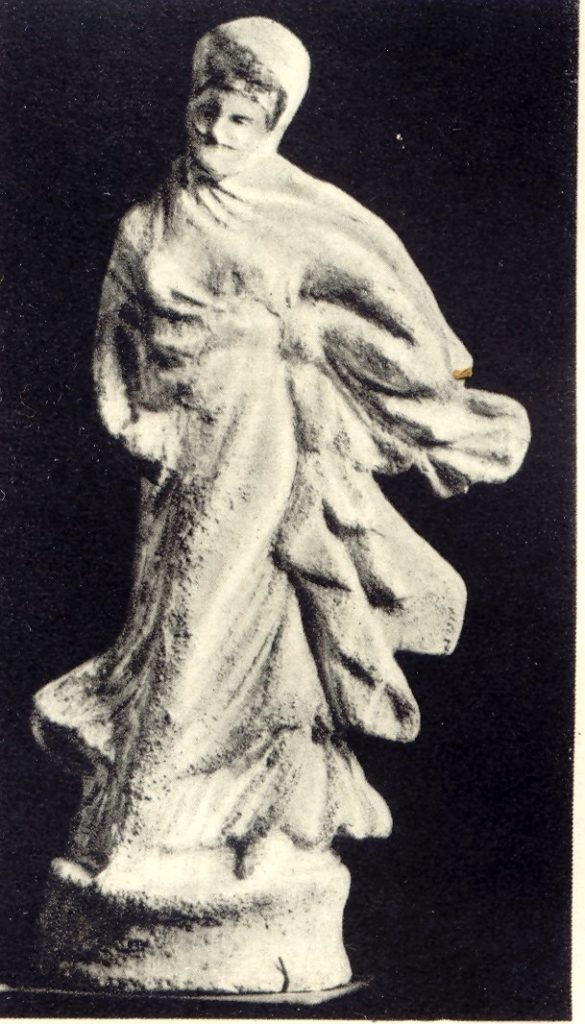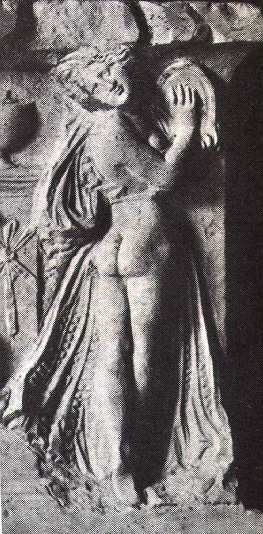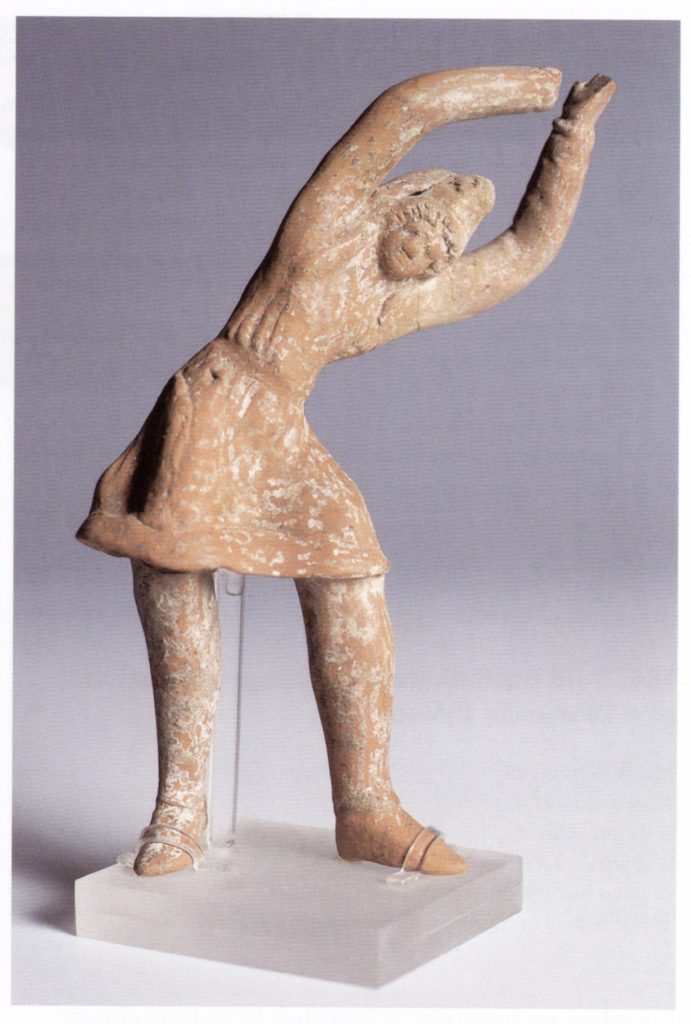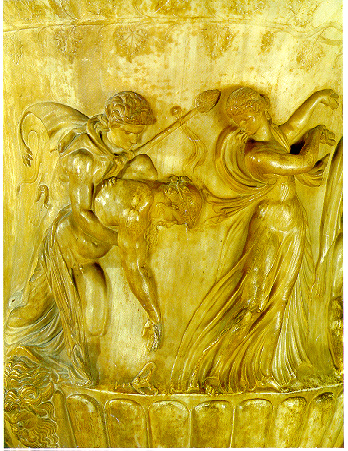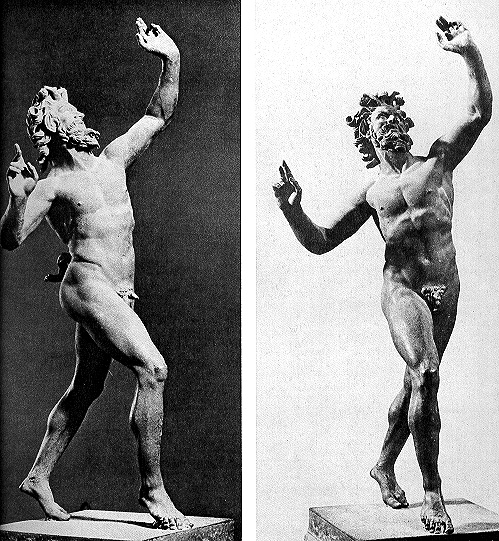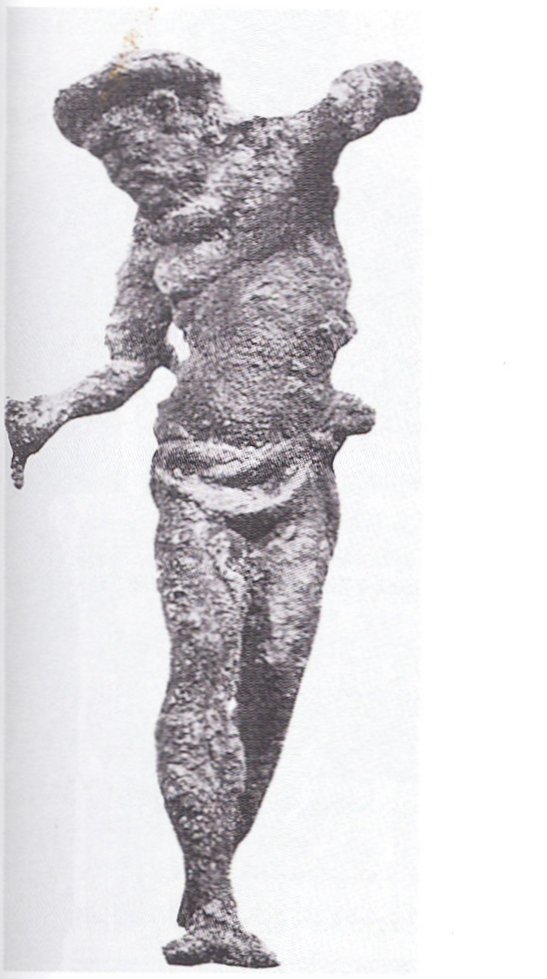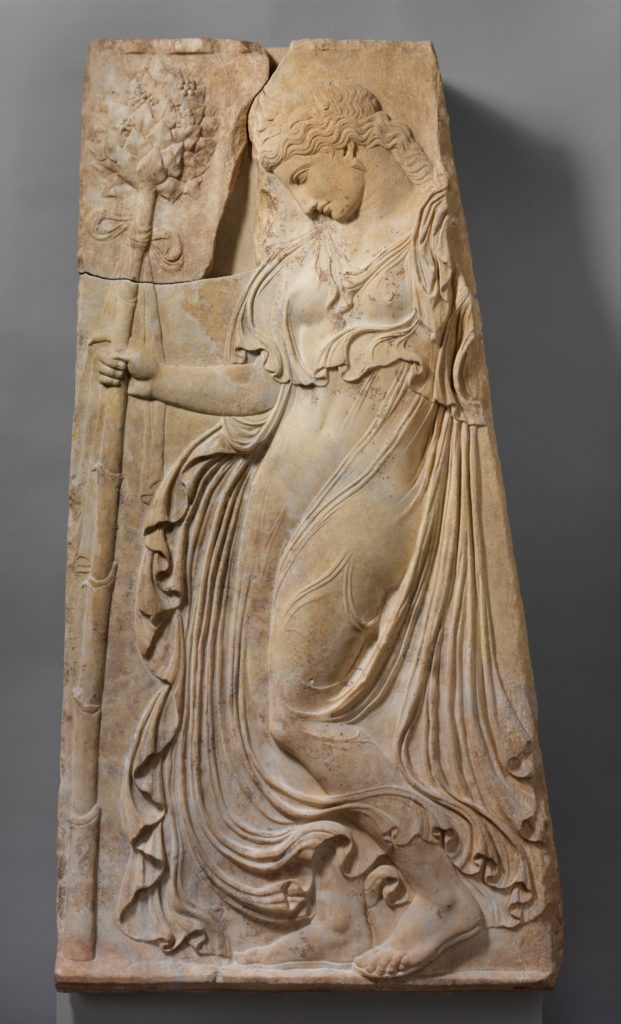Sculpture / -100 to 0
Dancer holding her head-scarf
Low relief, pentelic white marble (124 x 64 x 14.5 cm)
30 B.C., approximately
.
One of three reliefs (from a tripod base) showing dancing Horai
Neo-attic art, after an original of the second half of the 4th century BC. Probaly one of the Hours or a Nymph, both daughters of Zeus. Found in Athens, in the Theater of Dionysos (in 1862), in the Eastern portion of the right Parodos.
Mould for a relief with dancing girl wearing a Kalathiskos
Relief in clay (48 x 26 x 5.5 cm)
90 B.C., approximately
Found on the island of Delos, in a workshop destoyed in 69 BC. The mould would be used for casting a bronze relief plaque, to be reverted to a marble “choregic” stele, perhaps an ex-voto after a victory in a dance contest.
Denarius of Apollonia bearing three Nymphs or Graces dancing in a circle around an altar
Relief in a silver coin (2 cm diam)
50 B.C., approximately
1st century BC. Head of Apollo on the obverse. The two end dancers hold torches. The dancers should be identified as devotees of god, Muses, Nymphs or Graces, well-known for their love of music and dance.
Mould for a relief with dancing girl wearing a Kalathiskos
Relief in clay (48 x 26 x 5.5 cm)
90 B.C., approximately
Found on the island of Delos, in a workshop destoyed in 69 BC. The mould would be used for casting a bronze relief plaque, to be reverted to a marble “choregic” stele, perhaps an ex-voto after a victory in a dance contest.
Figurine of a dancing girl in Phrygian costume, leaning over to her left, arms above her head
Sculpture in clay and terracotta (15 cm height)
100 B.C., approximately
Found at Rheneia, 1988, in a child’s grave. The girl wears trousers, a short tunic with long narrow sleeves and a Phrygian cap. Probably a dancer-acrobat with garments reminding of those of the Amazons.
Greece
Marble relief with a dancing maenad. Adaptation of work attributed to Kallimachos
Sculpture, relief, pentelic marble
height 143 cm
27 B.C., approx.
The maenad, wearing an ivy wreath and carrying a thyrsos (fennel stalk) bedecked with ivy leaves and berries, moves forward, trancelike, her drapery swirling about her. She was copied from a famous relief of dancing maenads dated to the late fifth century B.C., when Euripides portrayed the manic devotées of Dionysos in his play the Bacchae.
Ancient Greece

